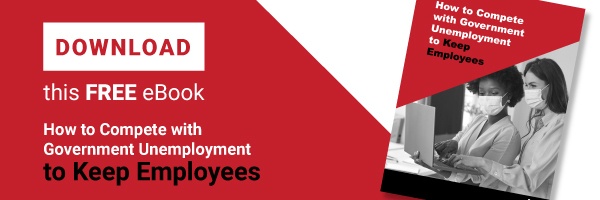
Many new businesses struggle to understand the true cost of labor. Hiring is a challenge, and if you aren't savvy about what your employees cost you, you can easily end up in a bad situation. You may end up being non-compliant with certain labor laws, or you may not spend on things you need to attract top talent.
It’s easy for new employers to think the cost is just wages and salary. Unfortunately, this isn't true. Here are some things you need to think about.
Employees Cost More Than Wages Alone
First of all, while wages or salary is an important part of the cost of an employee, the cost of taxes and benefits makes this higher. Generally, you should budget 1.2 to 1.4 times the amount of a salary to get your total cost.
However, it can vary slightly, especially when you start to factor in the costs of overtime. For hourly employees, you typically have to pay time and a half for anything over a 40-hour week, though in some states it registers as anything longer than an 8 hour day. Offering benefits to hourly employees, especially part-timers, can make a huge difference in morale. Even if these employees don’t use the benefits, giving them the option makes you seem like a more reliable employer.
If you hire contractors, you will not have to pay their taxes and benefits, as they cover those costs themselves. However, that often means these costs are rolled into the hourly rate you are paying them. In other words, expect to pay a contractor anything up to 1.5 times the rate per hour you would pay an employee.
Additionally, you need to consider the costs of equipment and space for your employees, the costs of hiring, advertising job openings, and the cost of training and professional development.
When budgeting for a new hire, you need to make sure you take all of this into account.
Required Costs to Employment
There are certain required costs you have to pay when you employ somebody. These amounts pay into systems designed to protect your workers when the unforeseen happens, and in many ways, they should be seen as insurance. The three big ones are:
- FICA. FICA stands for Federal Insurance Contributions Act. This is more commonly referred to as social security tax because it funds social security and Medicare. It's a percentage of gross wages and is paid half by the employee and half by the employer. For 2020 and 2021 these rates are 6.2% for social security and 1.45% for Medicare.
- FUTA and SUTA. The Federal Unemployment Tax Act requires that you pay a tax that then covers unemployment compensation for workers who lose their jobs. Most states also have a State Unemployment Tax Act that works the same way. Some small businesses may be exempt. The tax rates are different for each state and in some states, your rate may go up if you lay off more employees.
- Workers Compensation Insurance. Workers' compensation covers medical expenses and damages if an employee is hurt while on the job. This protects both you and the employee as it reduces the need for workers to sue employers when they are injured on the job.
All of these are mandatory for most or all employers and need to be counted into your budget.
Optional Benefits You Can Include
Businesses with fewer than 50 employees are not required to provide health care. However, not doing so means that you will have significant difficulties attracting and retaining talent. For the longest time, though, primary health care was considered the only essential benefit. Nowadays, employees expect more. You absolutely need to provide vision and dental, but you may also choose to offer a package of voluntary benefits. These might include retirement, training programs, and access to a financial planner.
You need to work out what benefits your employees are really looking for, which may involve checking what your competitors are offering, surveying employees to find out what they are interested in, and thinking about what fits your values and brand.
The cost of benefits is split between employee and employer. You want to balance this carefully. Placing too much of a financial burden on employees for vital benefits effectively lowers their pay and when they work this out it can affect morale.
Reducing the cost of benefits is important for all small businesses.
So, how can you reduce these costs? Some, you can't do anything about, such as social security tax. However, there are ways to reduce other costs.
How to Save Costs
Benefits and taxes are substantial costs, and so are compliance issues. Ending up with a large fine or a lawsuit (or both) because you failed to comply can hit your company really hard.
The best way to save costs is to outsource your HR by partnering with a professional employer organization (PEO). You will be able to save on costs, and it frees up your internal HR staff by outsourcing tasks like payroll. First of all, PEOs act as employer of record, which means your employees are added to their benefits plan. By combining all of their clients' employees into one pool, they leverage considerable economies of scale, allowing you to get quality benefits for much lower rates. This then helps you hire top talent and, importantly, retain workers. High turnover costs money in increased hiring costs.
PEOs can also help you stay compliant by providing access to full-time compliance specialists and experts who can reduce errors in calculating taxes or paying wages. They can help you design affordable, effective training, and professional development programs. In short, the best way to reduce the price of labor is to outsource to a PEO.
All employers have to pay the full cost of labor, which includes taxes and benefits, workers' compensation insurance, and any number of other costs over and above salary. It's crucial to understand all of these costs so you can stay competitive and inside your budget.

